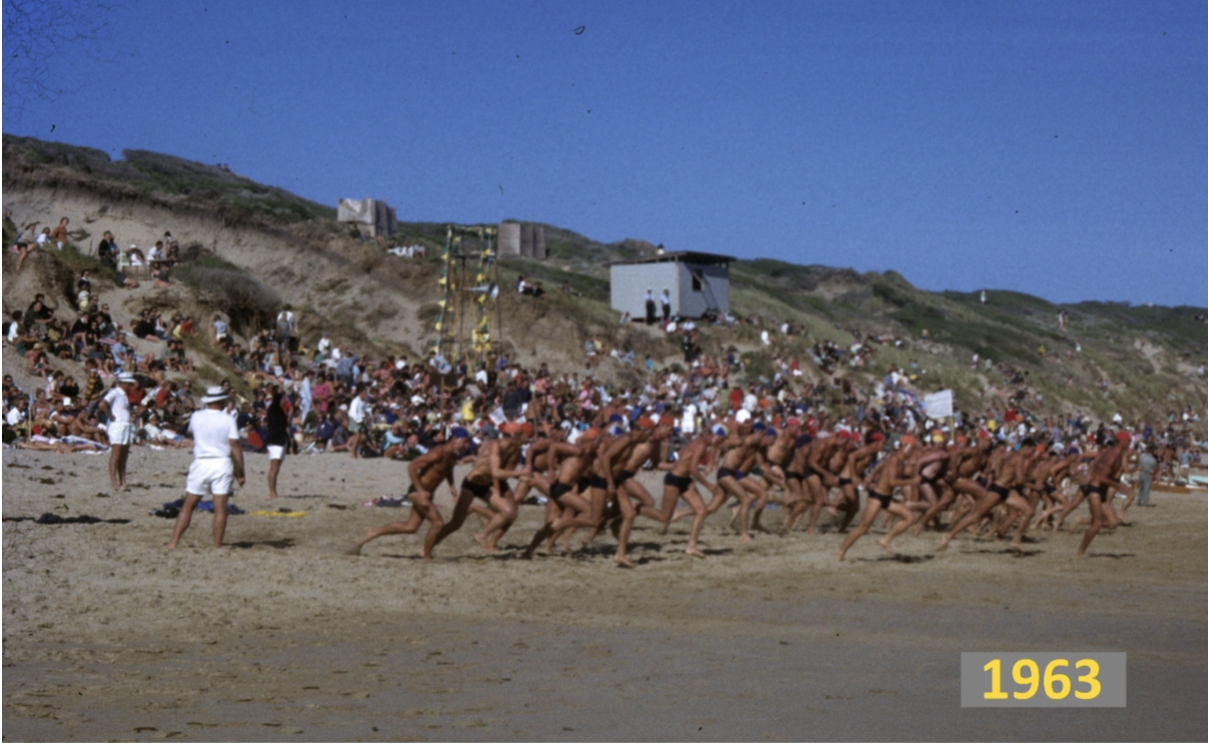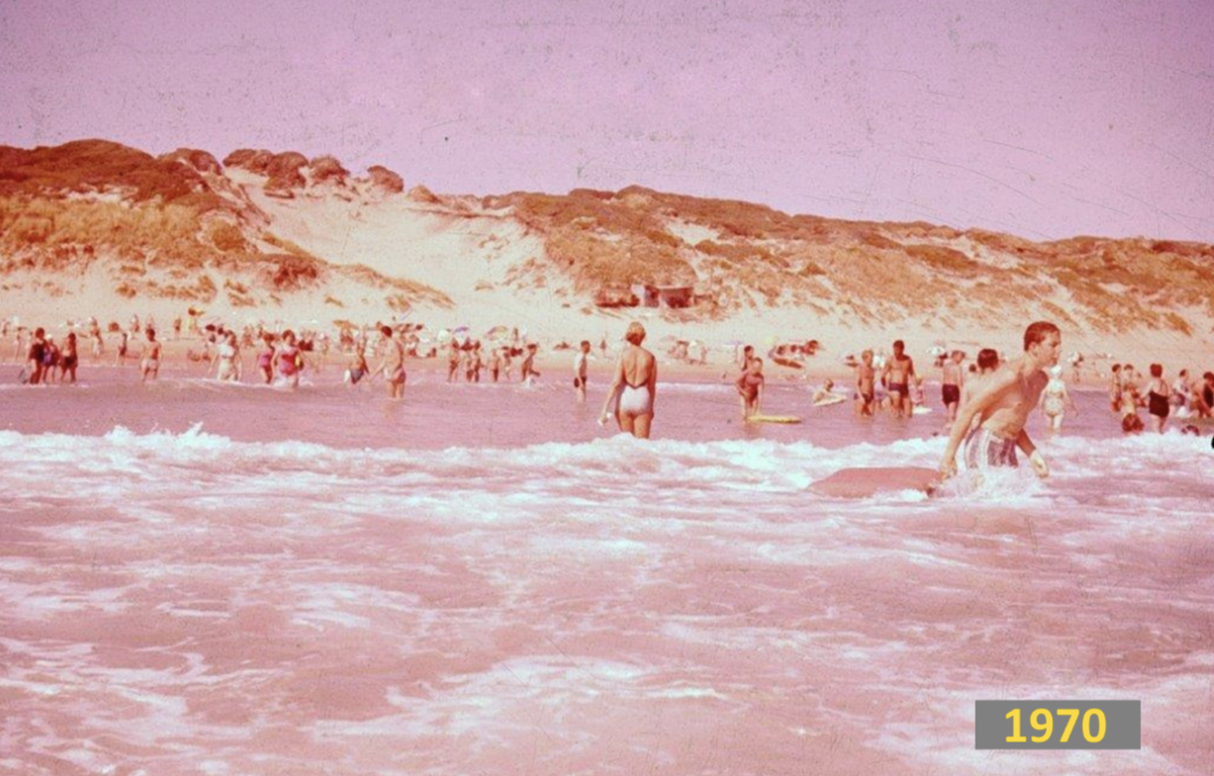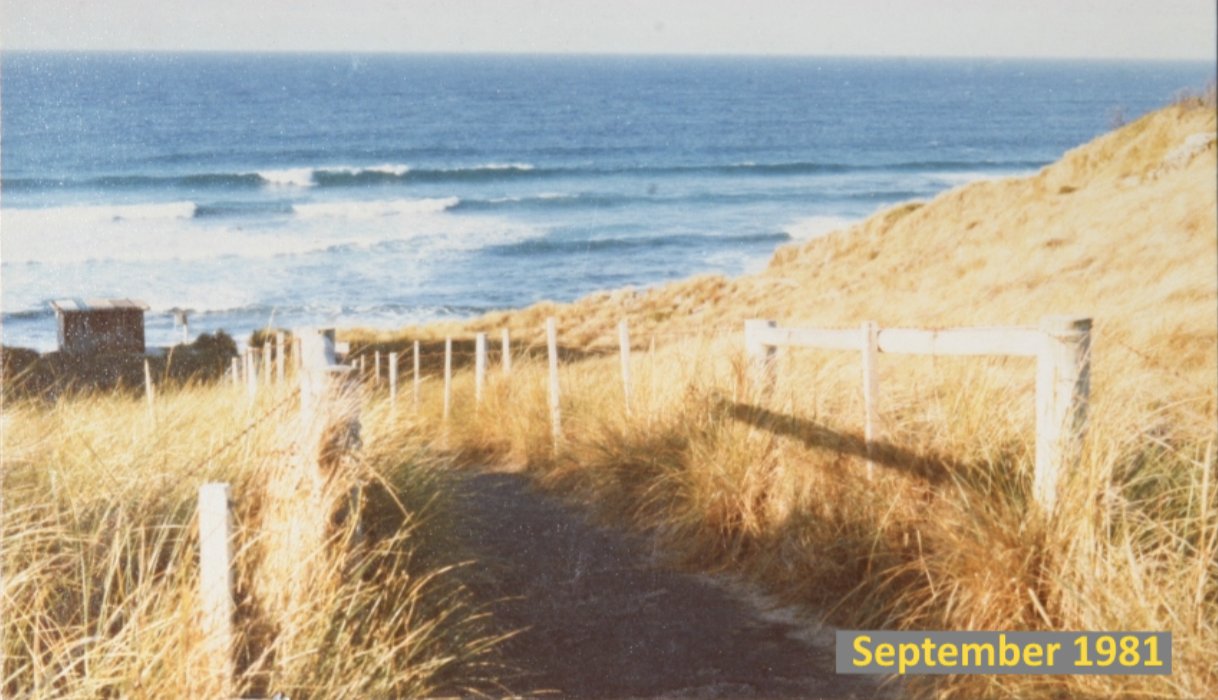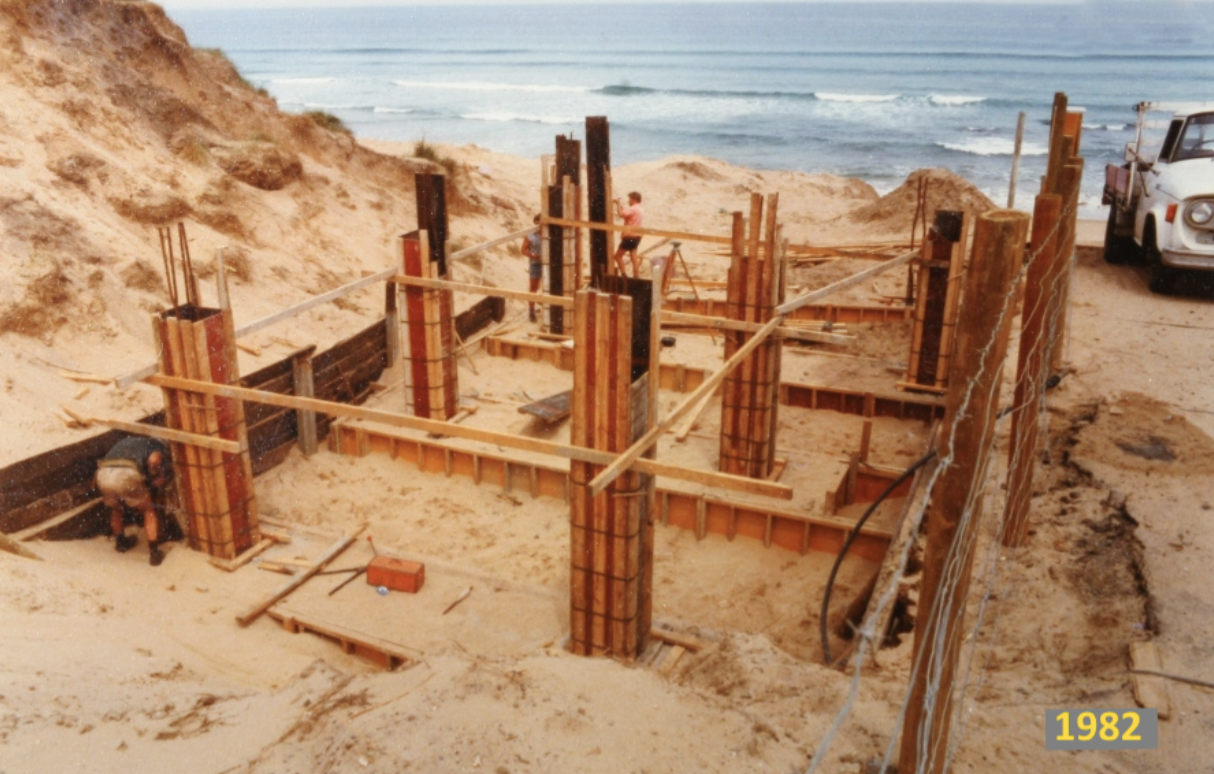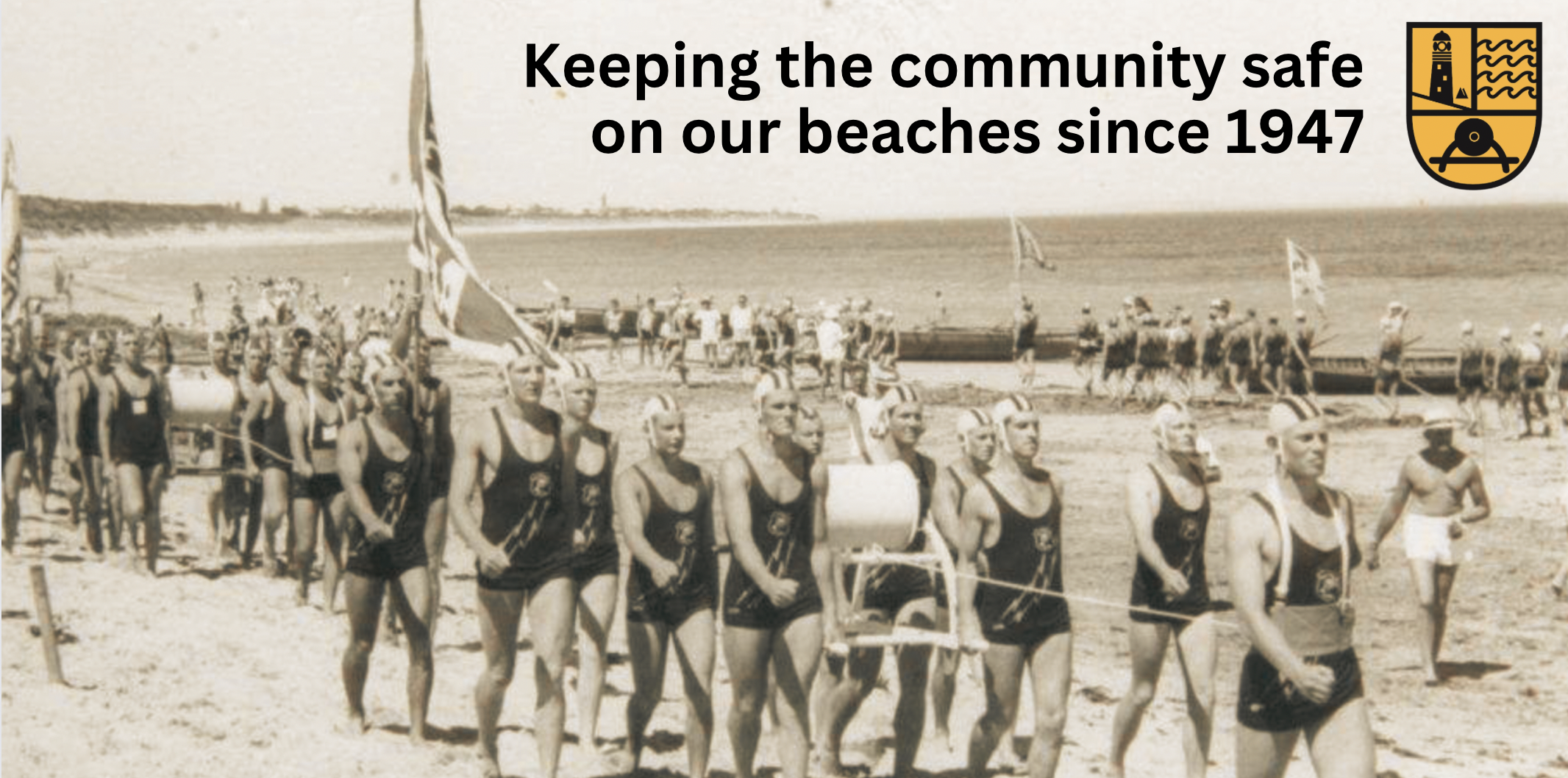
A new base for Lifesaving Operations
Since its formation in 1947, the Point Lonsdale Surf Life Saving Club has provided a continuous community service through a patrolled beach on the southern surf beaches of Point Lonsdale. The Club first patrolled a section of beach referred to as the Steps Beach, however, for various reasons the patrolled beach was moved to the west in what is known as the Surf Beach, Back Beach or Glaneuse Beach since the early 1960s.
A variety of temporary lifesaving facilities were constructed in the sand dune to store essential lifesaving equipment before a permanent structure was finally built in 1982. This building included an observation room, a modest equipment storage area and a first aid room. In 2002, the building was renovated and extended to add a patrol room, slightly larger equipment storage and, in conjunction with the Borough of Queenscliffe, public toilets.
The coastal area faces extremes of weather and in recent years engineering assessments have concluded that concrete cancer has substantially weakened the structure and fabric of the Beach Base and the only viable solution is to demolish and rebuild it. Additionally, the Point Lonsdale back beach is a very popular tourist destination. The Australian Bureau of Statistics data covering the Bellarine Peninsula has quantified the region’s population growth between 1991 and 2022 as 235%. The forecast growth of the Greater Geelong region to 2041 is estimated at 46%. The existing Beach Base is unable to efficiently provide the additional lifesaving requirements stemming from much greater numbers of beach users.
In recognition of the need to provide a replacement Beach Base, in the 2021/22 budget, the State Government announced that $2.5m funding would be provided for a new building. This significant and welcome investment will enable the Club to construct a fit-for-purpose lifesaving base to support the long-term effective and efficient and effective delivery of critical lifesaving services and improve beach user safety outcomes.
The Club is now working with a number of State Government bodies, the Borough of Queenscliffe and community groups to ensure the new building is designed and constructed which anticipates future demand for the Club’s operational services while taking into account factors such as predicted sea-level rise, native vegetation management and Indigenous heritage.
It is proposed that the rebuilt Beach Base would include:
Observation Room – an elevated area that has clear and unobstructed visibility of the beach.
First Aid Room – a facility that can treat those in need of first aid or medical treatment.
Emergency response motor room and emergency response equipment storage – an area to safely store a side by side all-terrain vehicle, Inflatable Rescue Boat, Outboard Motors and all lifesaving equipment required by lifesavers and lifeguards at patrolled beaches.
Patrol support room – an area for members to receive briefings and undertake administrative tasks.
Member change rooms – an area for changing into appropriate gear and storing personal items while on patrol.
Improvements to pedestrian safety – less equipment being brought over from Ocean Road daily, a greater buffer zone with pedestrians and more efficient storage.
Public toilets – in conjunction with the Borough of Queenscliffe (to be finalised).
Our aim is that the new facility will have the ability to support beach activities throughout the entire year and extend its value to the wider community.
Level 00
Level 01
Section
For more information, download a copy of PLSLSC Back Beach Base Site Analysis+ Concept Design Studies or contact the Club’s Building Committee via email at bc@plslsc.com.au
Members of the Club’s Building Committee:
Chris Harper (Chair)
Matt Ponsford ESM
Andrew Sutherland (Club Secretary)
The Committee welcome your feedback and queries.
